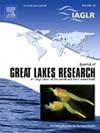Predicting the response of fish populations to changes in river connectivity using individual-based models
IF 2.5
3区 环境科学与生态学
Q3 ENVIRONMENTAL SCIENCES
引用次数: 0
Abstract
Barrier removal restores physical stream processes and improves accessibility of critical habitats to migratory fishes. Although increasing connectivity benefits stream systems and migratory fishes, barrier removals may also lead to increased production of undesirable or invasive migratory species, as well as myriad other concerns (e.g., reduced recreational opportunities). Few studies have predicted how migratory fish populations will respond to enhanced fish passage, despite being a critical step in the decision-making process. We developed an individual-based model framework to forecast the response of migratory fishes to changes in connectivity and applied the framework to six species under multiple fish passage scenarios for the FishPass project on the Boardman River, MI, which outlets into Lake Michigan. Population response to barrier removal was species-specific and varied based on initial population size and distribution within the watershed, number of fish passed upstream, and species life history traits. Species restricted to below the barrier prior to removal benefitted most; non-native species were found to have greater production potential under full passage scenarios than native Great Lakes species. With increasing passage of non-native Pacific salmonids, steelhead Oncorhynchus mykiss surpassed brook trout Salvelinus fontinalis as the system’s dominant species. Our results will inform decision-makers on management alternatives for fish passage on the Boardman River and our model framework can be modified, updated, and applied to additional river systems as more barrier removal projects are conducted in the future.
利用基于个体的模型预测鱼类种群对河流连通性变化的反应
清除屏障恢复了河流的物理过程,并改善了洄游鱼类的关键栖息地的可及性。尽管连通性的增加有利于河流系统和洄游鱼类,但屏障的移除也可能导致不受欢迎或入侵的洄游物种的增加,以及无数其他问题(例如,娱乐机会的减少)。很少有研究预测洄游鱼类种群将如何对鱼类通道的增强做出反应,尽管这是决策过程中的关键一步。我们开发了一个基于个体的模型框架来预测洄游鱼类对连通性变化的反应,并将该框架应用于密歇根州博德曼河(Boardman River)的FishPass项目中六个物种的多种鱼类通道情景。种群对屏障移除的响应具有物种特异性,且受种群初始规模和流域内分布、上游洄游鱼类数量和物种生活史特征的影响。迁移前局限于屏障以下的物种受益最多;在全通道情景下,非本土物种的生产潜力大于本土物种。随着非本地太平洋鲑科鱼类的增加,steelhead Oncorhynchus mykiss超过了brook trout Salvelinus fontinalis成为该系统的优势物种。我们的研究结果将为决策者提供关于Boardman河鱼类通道管理方案的信息,并且我们的模型框架可以被修改、更新,并在未来进行更多屏障清除项目时应用于其他河流系统。
本文章由计算机程序翻译,如有差异,请以英文原文为准。
求助全文
约1分钟内获得全文
求助全文
来源期刊

Journal of Great Lakes Research
生物-海洋与淡水生物学
CiteScore
5.10
自引率
13.60%
发文量
178
审稿时长
6 months
期刊介绍:
Published six times per year, the Journal of Great Lakes Research is multidisciplinary in its coverage, publishing manuscripts on a wide range of theoretical and applied topics in the natural science fields of biology, chemistry, physics, geology, as well as social sciences of the large lakes of the world and their watersheds. Large lakes generally are considered as those lakes which have a mean surface area of >500 km2 (see Herdendorf, C.E. 1982. Large lakes of the world. J. Great Lakes Res. 8:379-412, for examples), although smaller lakes may be considered, especially if they are very deep. We also welcome contributions on saline lakes and research on estuarine waters where the results have application to large lakes.
 求助内容:
求助内容: 应助结果提醒方式:
应助结果提醒方式:


